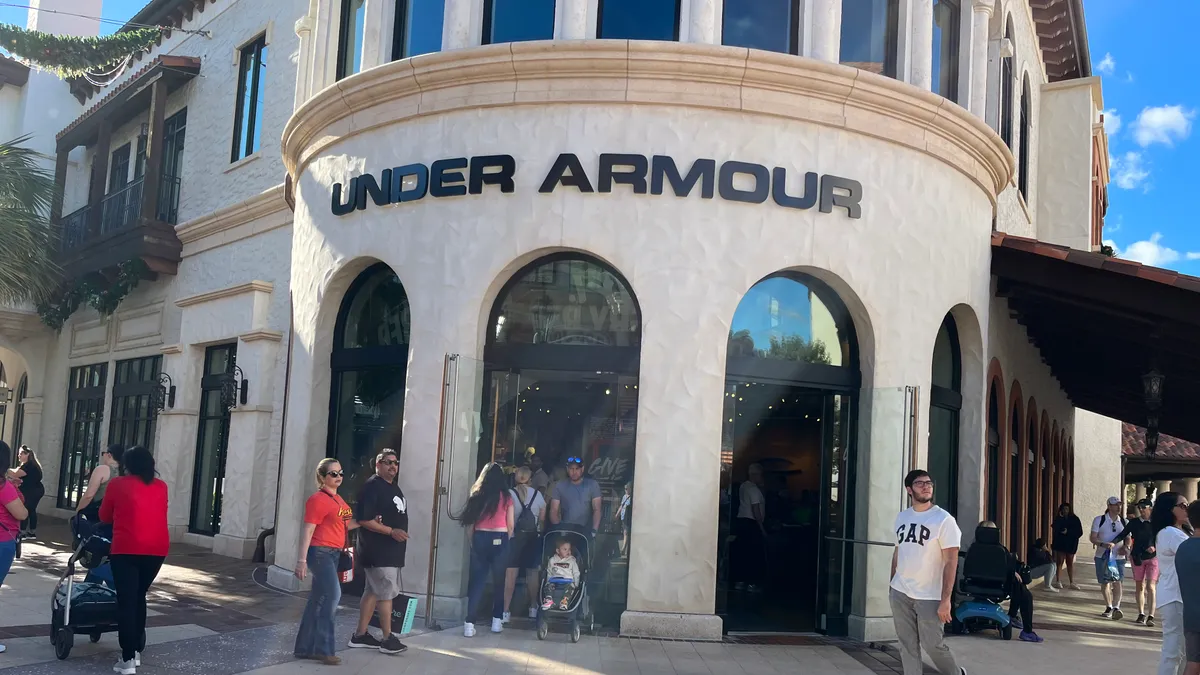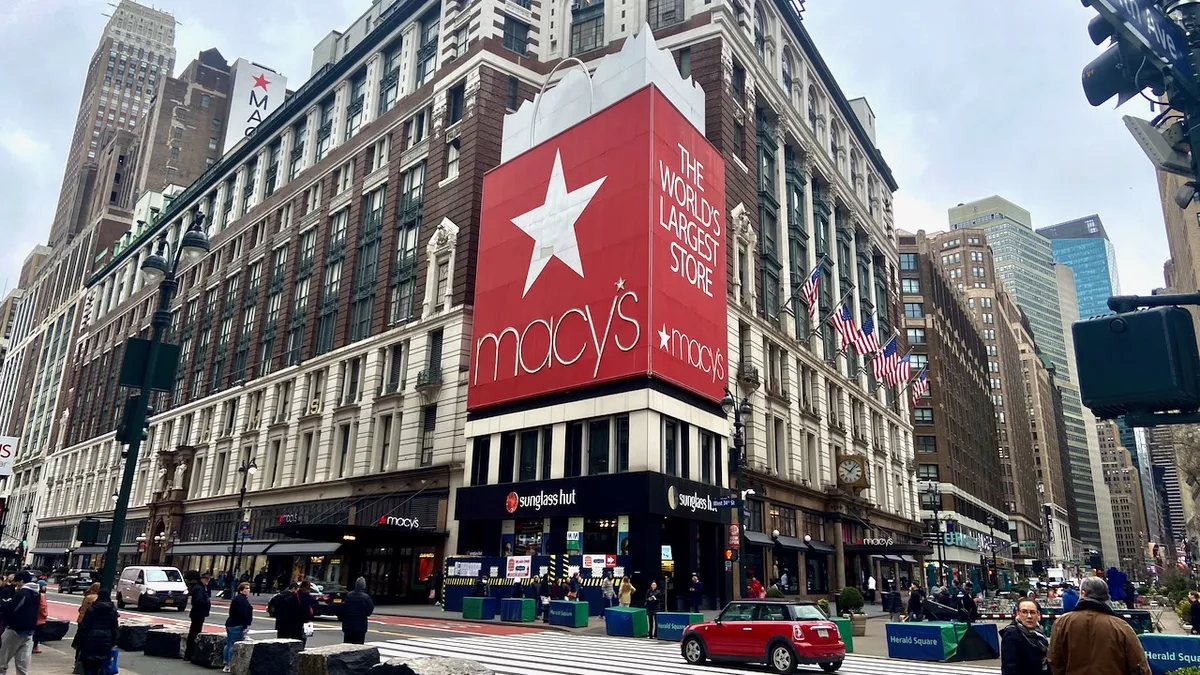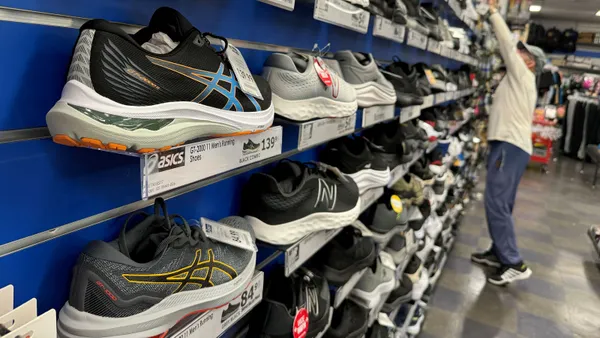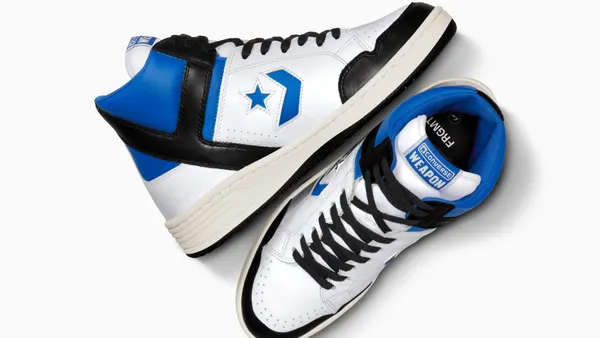Dive Brief:
- Under Armour’s struggles continued in Q3 with revenue declining 6% to $1.5 billion. That was due to North America, the retailer’s largest region, where revenue fell 12%, according to a company press release.
- Wholesale was another challenge point for the brand, with revenue in that channel decreasing 13% as retailers cut back on orders. DTC revenue, on the other hand, increased 4% and made up more of the retailer’s revenue at $741 million.
- Inventory was down 9% to $1.1 billion as Under Armour cleared merchandise through increased promotions and a higher volume of sales to off-pricers. Net income for the quarter was $114 million.
Dive Insight:
Under Armour’s turnaround is stuck in a holding pattern as the retailer implements sweeping leadership and product changes.
CEO Stephanie Linnartz has spent much of her first year overhauling the brand’s management team, but noted on a call with analysts that these leaders won’t have much impact on product until spring or summer 2025.
“About two-thirds of my executive leadership team is new compared to last year and each of these leadership changes is tied directly to the inconsistencies I mentioned earlier,” Linnartz said Thursday.
Including a new chief of product and head of the Americas, named just last month, Under Armour has also brought on a new: chief consumer officer, chief communications officer, chief design officer, chief supply chain officer, leader for the EMEA region and senior vice president of DTC in the Americas. The company is also looking for a new head of footwear, Linnartz said.
“When you put all of that in a blender, that is a lot of change in roughly six months. What’s terrific is — again, these executives who all have really incredible backgrounds — have hit the ground running. I’m so excited to see how well they’re working together,” Linnartz said. But, “it’s going to take some time to get going.”
Under Armour has also lost other employees, including Chief Operating Officer Colin Browne — who left in the fall — and 50 corporate positions after layoffs in June.
In the meantime, Under Armour is dealing with a difficult wholesale environment as retailers recover from bloated inventory levels. Although Under Armour’s inventory is in a better place now, executives noted that doesn’t mean there won’t be any promotional activity going forward.
“The market we think is coming back to normalization at this point — maybe a little bit longer to go, but pretty close — however, we are still seeing a fairly promotional environment out there,” Chief Financial Officer Dave Bergman said. “Retailers are being fairly cautious and still really trying to keep clean after a year or two of obviously having more than they wanted.”
While some of the poor wholesale performance is due to industrywide trends, GlobalData Managing Director Neil Saunders noted that Under Armour also doesn’t have a compelling offering at some retailers, leading consumers to choose other brands.
“Over key occasions like back to school and, more recently, the holidays, Under Armour has fallen down the batting order of brands shoppers are interested in. There is even more of an erosion when it comes to Under Armour being a brand consumers are willing to pay a premium for,” Saunders said in emailed comments. “All of this is a consequence of a brand that doesn’t have a clear enough point of view or a unique enough selling point.”
Under Armour is attempting to remedy that by revamping its design leadership and leaning into “sportstyle,” its answer to the athleisure movement. Some of that is just marketing its products differently, Linnartz said, but come next year, the brand will also roll out new products with that mindset. In the past, Linnartz has also made it clear that the brand plans to appeal to women more, which necessitates stronger design.
“We are not trying to be anything other than authentically Under Armour and performance is in our DNA, it always will be. So for us, sportstyle is that intersection of performance and style and they’re inextricably linked,” Linnartz said. “We’re thinking about sportstyle as really more of an evolution versus a revolution.”














